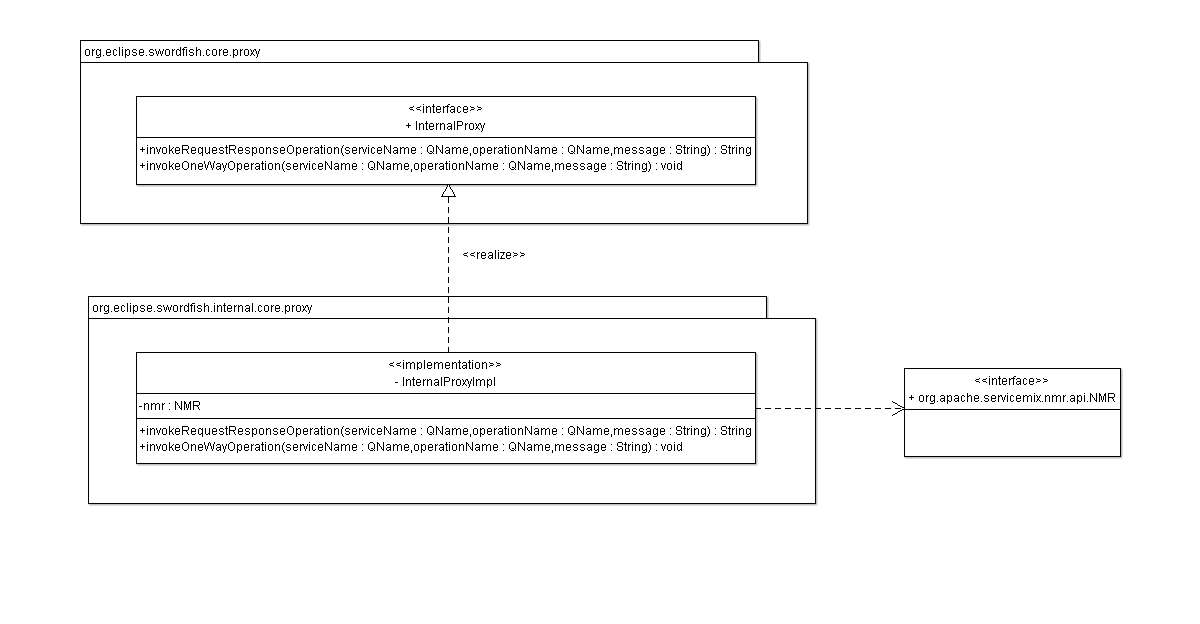Notice: this Wiki will be going read only early in 2024 and edits will no longer be possible. Please see: https://gitlab.eclipse.org/eclipsefdn/helpdesk/-/wikis/Wiki-shutdown-plan for the plan.
Swordfish Documentation: Architecture: Internal Service Proxy
Revision as of 06:25, 26 October 2009 by Sergey.dneprovskiy.sopera.de (Talk | contribs)
Component diagrams
Sketch of сomponent сlasses for Internal Service Proxy Plugin
Plugin description
InternalProxy acts as. At runtime it can be easy retrieved as OSGi service and Example of usage:
- Proxy injection (at runtime available as OSGi service):
<osgi:reference id="internalProxy"
interface="org.eclipse.swordfish.core.proxy.InternalProxy" />
<bean id="ASFRegistryProvider"
class="org.eclipse.swordfish.internal.resolver.backend.remote.ASFRegistryProvider"
p:proxy-ref="internalProxy"/>
public class ASFRegistryProvider extends AbstractDocumentProvider {
private InternalProxy proxy;
@Override
public Collection<ServiceDescription<?>> getServiceProviderDescriptions(QName interfaceName) {
String res = null;
try {
res = proxy.invokeRequestResponseOperation(
QName.valueOf("{http://services.sopware.org/registry/ServiceRegistryProvider/1.0}ServiceRegistryProvider"),
QName.valueOf("{http://services.sopware.org/registry/ServiceRegistryProvider/1.0}xlookUp_serviceProvider"),
"<inMessage/>");
} catch (Exception e) {
e.printStackTrace();
}
// further processing...
return null;
}
public void setProxy(InternalProxy proxy) {
this.proxy = proxy;
}
}
Current implementation assumes that outbound service endpoint is already registered within NMR.<b/>
It is possible to

